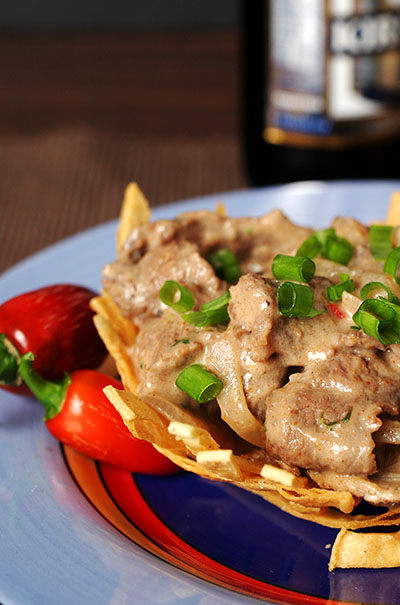Tex Mex Goulash
When it comes to high cuisine, I'm still a rank amateur. I'm not formally trained, but in my self-teaching, I try to follow and absorb the traditions of classic French techniques, especially when it comes to sauces. I follow Peterson, Larousse Gastronomique, the CIA textbook, McGee, and many others, mainly to learn a classic base. Then, I attempt Keller and Bourdain and Colicchio and Ripert to see how classically trained chefs take a traditional technique or recipe, then put their own spin on it. Many of our posts on FotoCuisine have been French culinary standards, like steak and béarnaise with fried potato and braised beef short ribs. Many have also been my groping attempts to take a traditional technique (classic for a reason -- it works), and throw something weird into it to see if it still holds up. In the last six months or so, I've realized I am developing something of a personal style, though I still feel I'm a scrambling amateur most of the time. I like to use a technique from a particular region on the globe, then use an ingredient or a technique from another. It's sort of a fusion style, except fusion has a history of Asian/Californian/American cuisine, and I'm just as likely to avoid Asian and use New Mexican and New England mixed with African and northern European.
With today's local farming trend, global cuisine may not necessarily be PC. The carbon footprint of Maine lobster with a New Mexico chile cream sauce is probably a little more decadent than the blue crab bisque I made from crabs I caught in my own backyard. But, if I have any motto in life, it is: "Everything in moderation...especially moderation."
Maine lobster or Hawaiian yellowfin or Alaskan salmon or Prince Edwards oysters are not weekly dinners here at FotoCuisine HQ, while Florida shrimp or fish or local(ish) chicken are. However, as a once-in-a-while thing, I personally don't see a problem with shipping in food from the far corner of the globe. I think there is a real need to be conscious about carbon and humane treatment of food (sustainability is also a serious concern, but I'm not going to get into that in this post). However, I feel that there's also a counter-balance to concerns about the environmental costs of shipping, and that balance is the emotional value that any culture gets by experiencing another culture in any way possible.
One of the bonus spin-offs of globalization is that we can experience ingredients and techniques of cuisines that anyone a century ago would never have experienced in a lifetime, and we can do that from a supermarket, ordering from the Internet, or from a local restaurant. We don't need to do it every day, but any exposure to another culture, from distant travel to a sauce over the chicken on your plate, can only expand one's experience in life.
I'm getting way too philosophical for this very peasant dish, though. I like Southwestern American cuisine, and I am from northern European ancestry. Every cooking member of my family has their own version of a stroganoff or goulash, based on their ancestry from regions of Poland, Latvia, Russia, or whatever countries used to exist, but have been redefined by a century of warfare. But, I think there's a similar concept of technique (though not ingredients) between what is popularly called Tex-Mex here in The States, mixed with a vast melting pot of northern Europe.
So, I made a Tex-Mex goulash, from flatiron steak strips, mushrooms, onions, red jalapenos I grew in my yard, and a lot of regional spices and ingredients. I served it in a nest of fried corn tortilla strips, topped with some scallions.
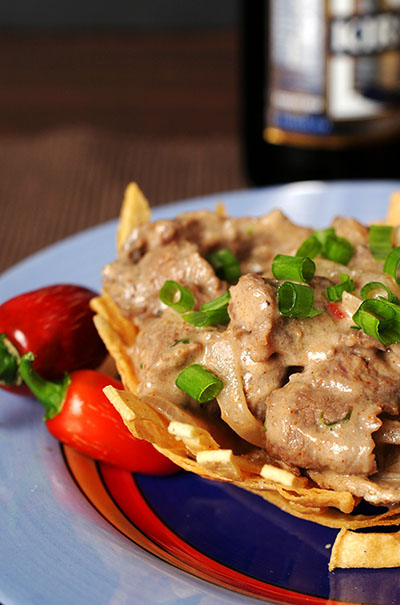
One of my local food places had a sale on flatiron -- 10oz cryo-vac steaks for $4 a pop. I bought several.
After thawing and restoring to Earth's atmosphere, I cut the steak on a bias against the grain. In one sense, it's a sushi technique, but it's also one used in cutting Latin flank steaks, or even London Broil.
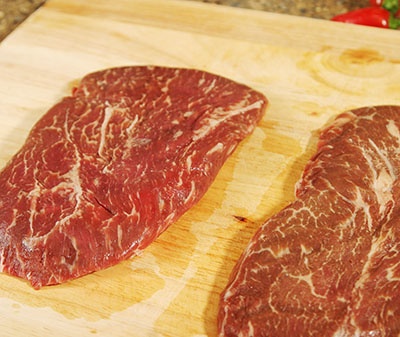
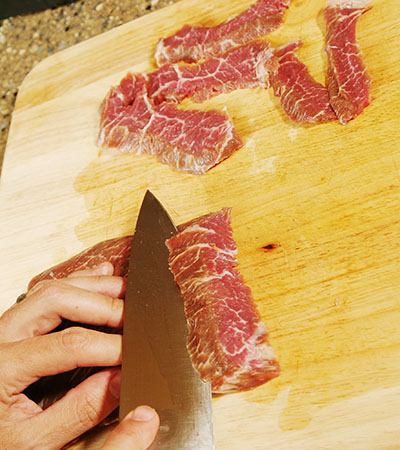

I put together a Tex-Mex selection of spices, clockwise from bottom: flour, cumin, chili powder, garlic powder, black pepper, kosher salt, cayenne pepper, onion powder. I mixed them, then tossed the steak strips in the spices.
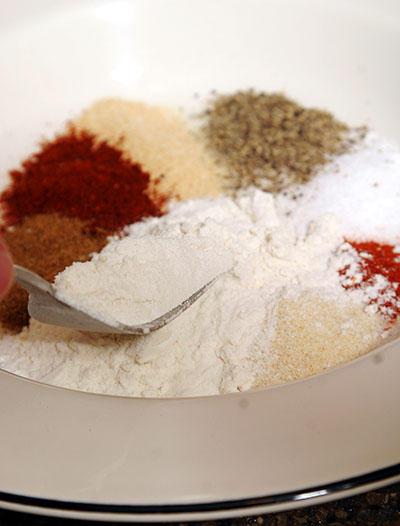
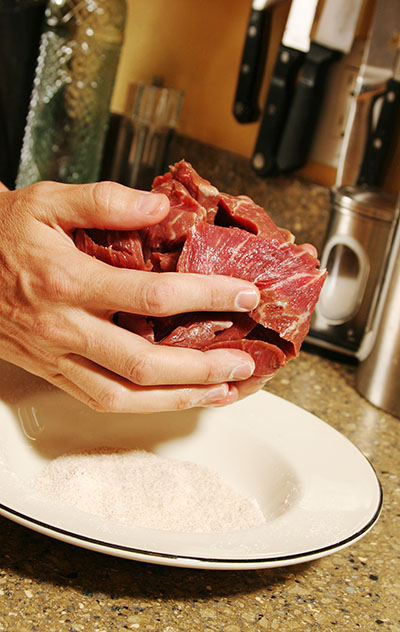

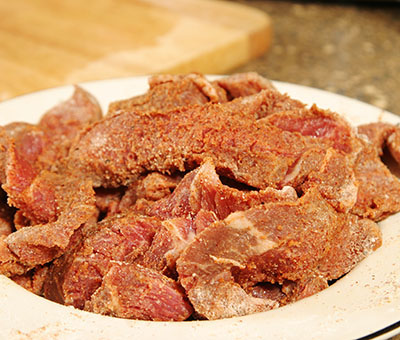
I chopped some criminis and a white onion, and seeded and diced two red jalapenos I grew in my yard.
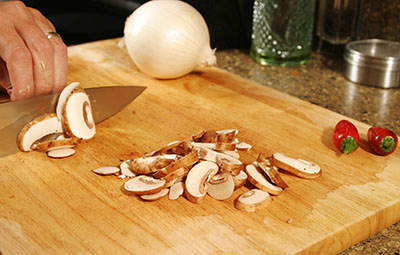

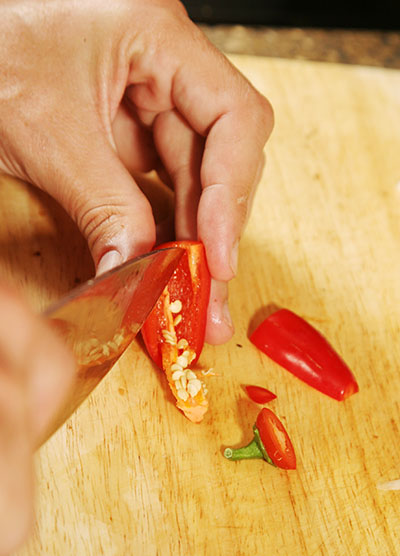
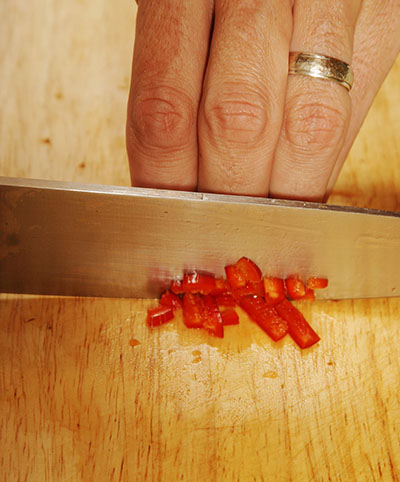
I threw some olive oil in a deep pot, and browned the meat. It doesn't have to be perfect -- there were parts of strips that were still red, but the idea is to add flavor, not necessarily to cook the meat. If the majority of the steak browns a bit, the flavor will be released into the meal.
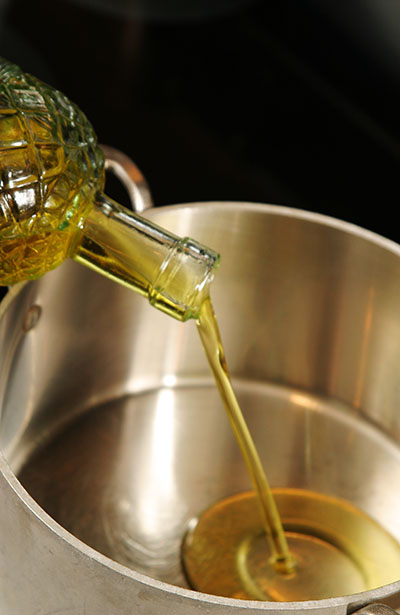
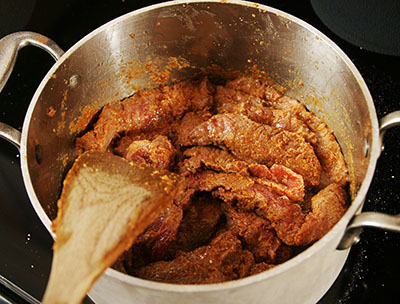
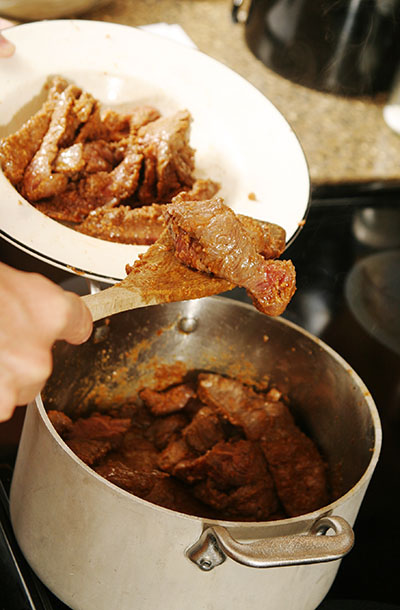
Once browned, the meat was removed for a little while, and I poured a bit of beer in (less than 1/4 cup) to get that fond off the bottom of the pan. The reason for this was twofold -- I was going to sweat some onions and mushrooms and I wanted that flavor on the veggies, not the pot. Also, if it stayed on the bottom of the pot, it might burn, and that would throw bitterness and a burned taste to the meal that would not be welcome.
Once the fond was released into the beer, I threw in the onions and sweated for a while. Meanwhile, I mixed 1/2 cup of sour cream, 2 teaspoons or so of flour, and a good 1/4 cup chopped cilantro.
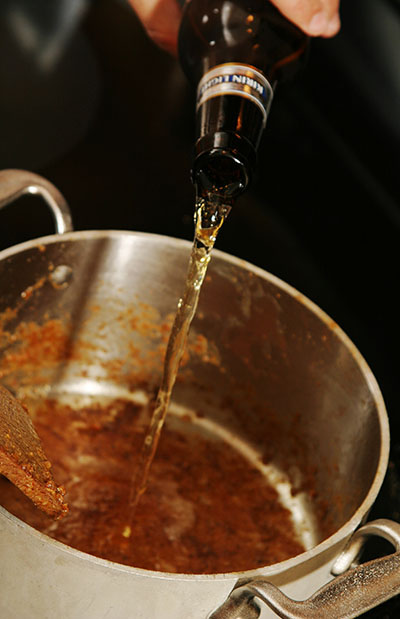
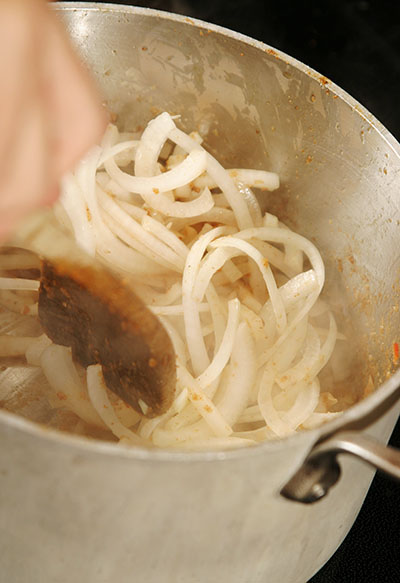
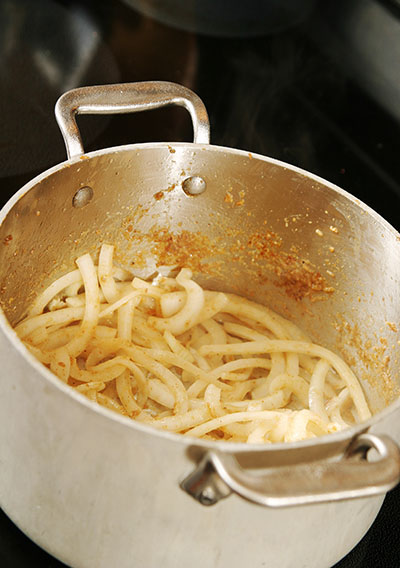
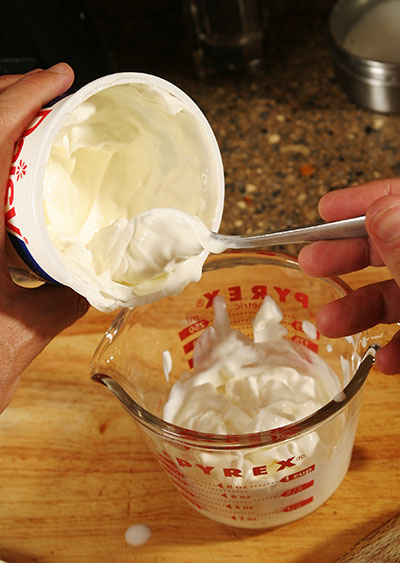
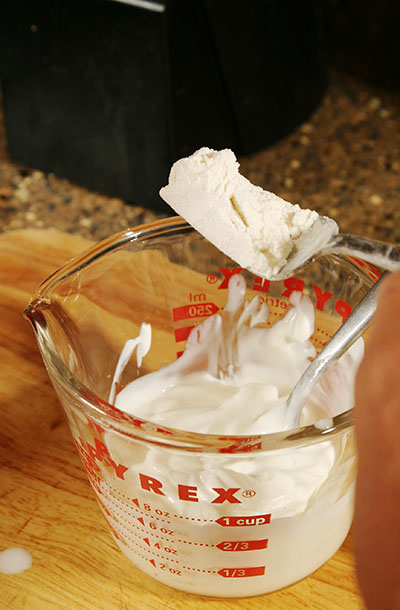
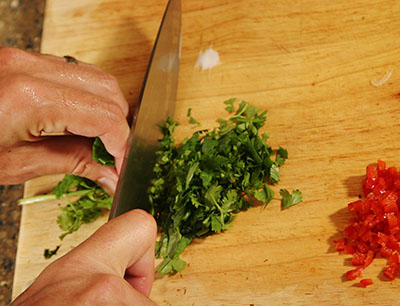
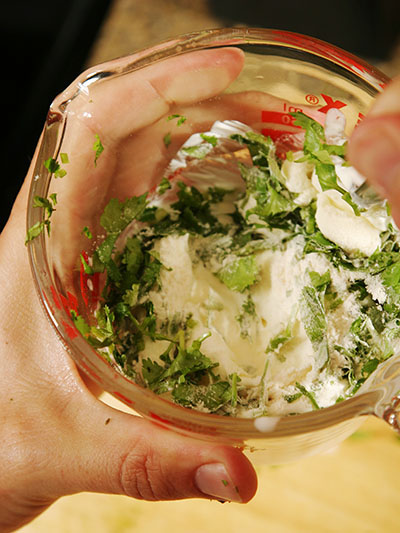
When the onions were translucent, I added the mushrooms, the jalapeno, and a tablespoon or so of tomato paste, and sizzled that together until the tomato paste started to caramelize a little and the mushrooms were getting soft.
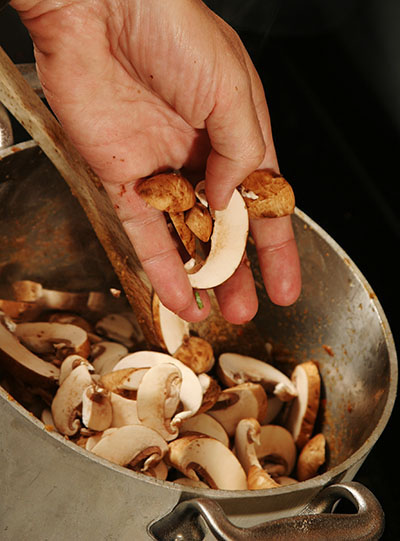

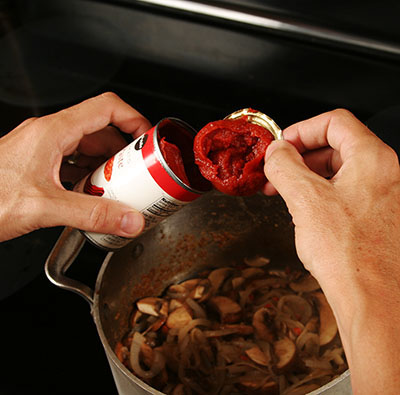
Once the mushrooms and tomato paste were ready, I tossed the meat back in along with the sour cream/flour/cilantro mixture, then I moved the heat to a low simmer. At this point, I just wanted to heat the meat back up again and maybe ease it a little bit toward medium instead of rare, but very gently. With the size of the strips, a simmer of 10 minutes would be the most necessary.
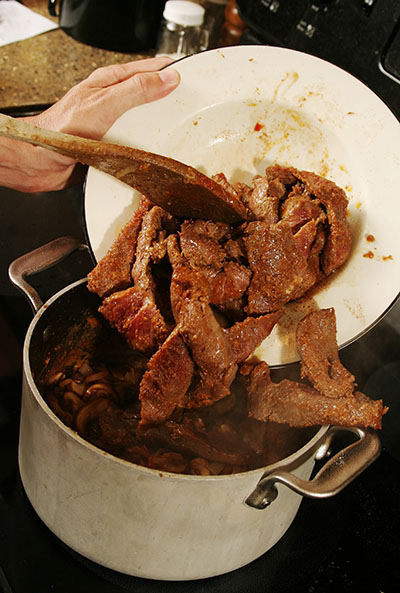
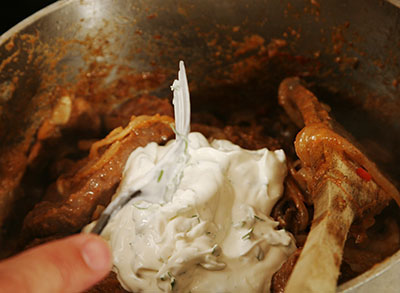

While the meat was simmering, I made the tortilla nests, but this could have been done a few hours ahead of time, then reheated in a low oven. I took two tortillas and cut them into narrow strips. I took a mesh strainer and kinda crosshatched the strips -- it doesn't have to be a perfect basket weave (though that would be cool if I wanted to be that OCD) but just a bunch going one way, and a bunch going another way. I sandwiched another mesh strainer on the top to keep the tortillas in a nice basket curve, then deep fried in 375 degree oil. Once done, I salted with kosher and drained on paper towels.
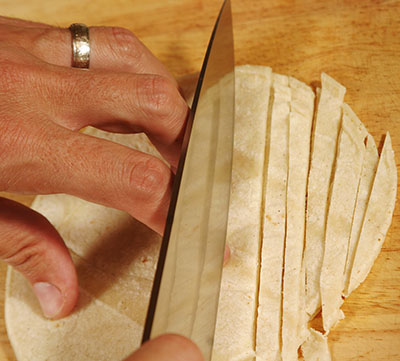
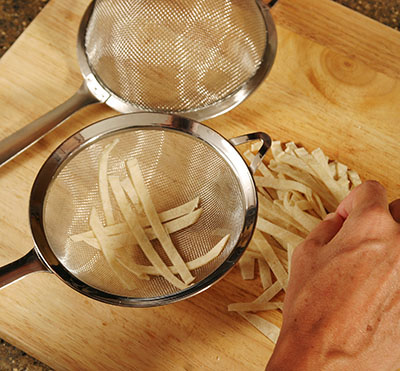
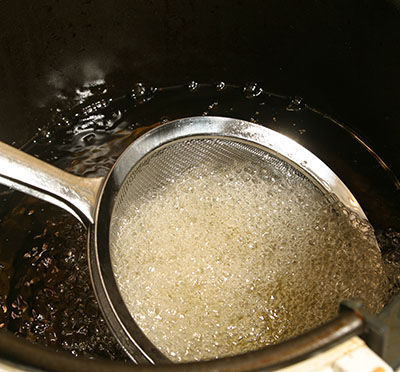
For plating, the goulash goes into the tortilla basket, where it is garnished with chopped scallions.

Deconstruction: This worked out pretty well, sort of a fajita style of meat, onions, and mushrooms, but the goulash techniques of searing, then finishing slow in the sour cream sauce, gave it a really amazing tenderness. I was worried that a couple jalapenos, even veined and seeded, would kick the heat up too much, but the sour cream mellowed it out a lot while keeping the fruitiness of the ripe/red pepper.
I love the tortilla nests -- I've used them before -- and I always forget to make extras. They're fun to munch on, like the crunchy flat noodles you get in Chinese restaurants.
Two 10-oz flatirons made enough for four, though. I kept the leftovers and reheated it for lunch the next day over penne pasta (I was looking for egg noodles, but I was out).

